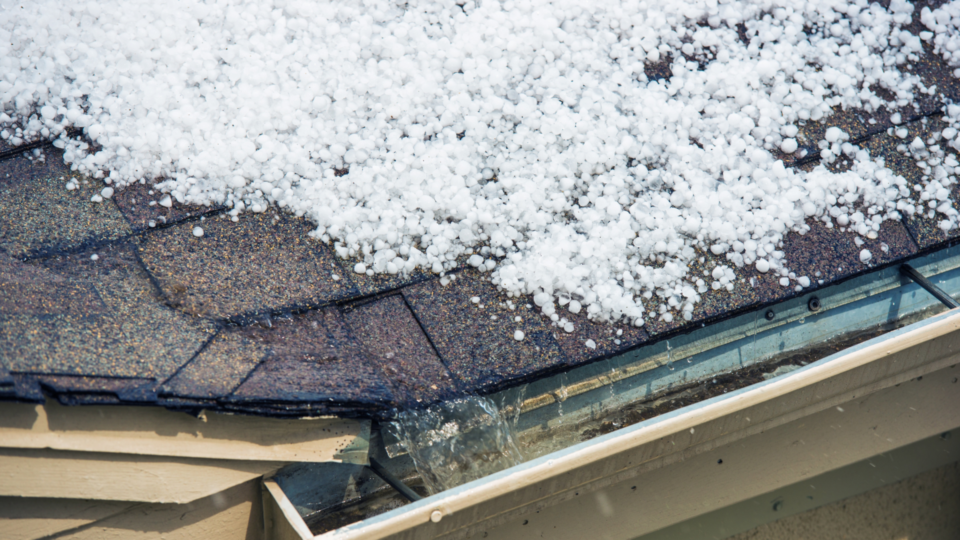When a storm passes, it often brings a sigh of relief. The thunder quiets, the winds calm, and the rain stops pounding. From the outside, your home might look intact—or at least repairable. But beneath the surface, storms can leave behind serious, often invisible threats that jeopardize your health, safety, and property value. These dangers aren’t always obvious, and ignoring them can lead to bigger problems down the road.
Here are five hidden dangers that can linger long after the skies have cleared.
1. Water Intrusion and Mold Growth
One of the most underestimated post-storm risks is water damage that isn’t immediately visible. Even if your home doesn’t flood, wind-driven rain can find its way in through small roof punctures, window seams, or foundation cracks. Moisture can seep behind drywall, under flooring, and into insulation—places you won’t easily notice.
Within 24 to 48 hours, mold can begin to grow in damp, dark areas. This can trigger respiratory issues, allergic reactions, and long-term structural damage. Since mold often develops in hidden spots, homeowners may not discover it until the smell becomes noticeable or someone in the home begins to feel ill.
Prompt inspection and moisture control are essential to preventing mold outbreaks. If you suspect water may have entered your home, don’t wait for visual signs—take action early.
2. Compromised Electrical Systems
Strong storms can wreak havoc on your home’s electrical systems. Lightning strikes, downed power lines, and water exposure all pose serious risks to wiring and appliances. Even if the lights are back on and your outlets seem to work, your electrical infrastructure could still be damaged.
Hidden wiring behind walls may be scorched or short-circuited. Water-soaked outlets or breaker panels might not show outward signs of failure but could spark or fail later. This kind of damage isn’t something a typical homeowner can easily detect or fix—and it’s certainly not something to ignore.
If your home experienced flooding or power issues during the storm, it’s wise to have an electrician evaluate your system to ensure everything is safe.
3. Structural Weaknesses in Roofs and Walls
High winds, flying debris, and heavy rainfall can cause subtle structural shifts that aren’t immediately visible. Roof shingles may look intact from the ground but could be cracked, lifted, or missing altogether. Support beams and wall frames may have weakened from wind pressure or water saturation.
These issues often manifest weeks or months later in the form of sagging ceilings, warped walls, or mysterious leaks. By the time the problem becomes obvious, the damage may be extensive—and expensive to fix.
A post-storm roof and structural inspection is a smart precaution, especially if you experienced strong gusts, falling branches, or nearby building damage. Catching problems early could save you from costly repairs in the future.
4. Contaminated Floodwater and Soil
Floodwater isn’t just rain—it often contains a toxic mix of bacteria, chemicals, and sewage, especially if local sewers overflow or industrial runoff is present. When floodwater enters your home or yard, it contaminates everything it touches, including carpeting, drywall, furniture, and soil.
Even after the water dries, harmful residues can remain. Kids and pets playing in the yard, or even walking barefoot, can unknowingly come into contact with lingering contaminants. Mold spores and bacteria in previously submerged materials can continue to circulate through your indoor air as well.
To fully eliminate these risks, professional storm cleanup is often necessary. It ensures that affected areas are disinfected and restored properly—not just dried and wiped down.
5. Damaged Trees and Hanging Branches
While downed trees are an obvious hazard after a storm, what many homeowners overlook are the branches and limbs left hanging precariously above their homes or power lines. These can be weakened, cracked, or partially detached during a storm and might not fall until days or even weeks later.
Dead or damaged trees may also be structurally compromised and at risk of collapsing with minimal wind or weight. Failing to address these hazards can lead to roof damage, power outages, or injuries to people and pets.
After any major storm, it’s important to inspect your property for unstable trees and branches. Better yet, have an arborist or tree removal expert take a look if you suspect potential danger.
Conclusion: What You Can’t See Can Still Hurt You
After a storm, it’s tempting to breathe a sigh of relief and assume the worst is over. But just because the damage isn’t obvious doesn’t mean your home is in the clear. From hidden mold growth to electrical and structural threats, storm damage often reveals itself slowly and silently.
The best way to protect your family and property is by taking proactive steps. Schedule inspections, document damage for insurance, and consider professional help for cleanup and repairs. It’s always better to be cautious than to overlook a hidden danger that could cost you more in the long run.
Storms may pass, but the risks they leave behind can linger—unless you’re prepared to uncover and address them.

